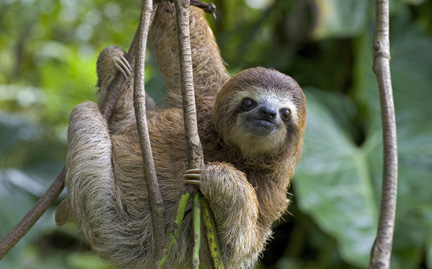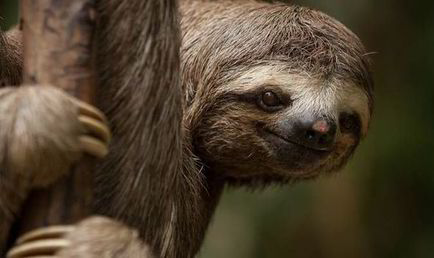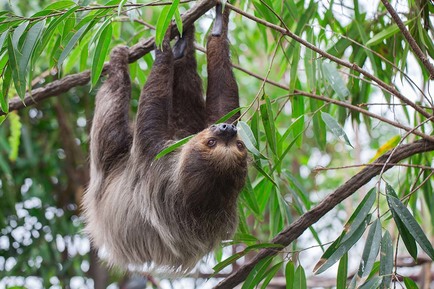|
SLOTHS
The Cloud Forests of Ecuador have two species of sloth: the diurnal three-toed sloth and the nocturnal two-toed sloth. It’s very possible you’ll spot one of the former while hiking in the forests. They are usually found hanging motionless from tree limbs or progressing at a painfully slow speed along a branch toward a particularly succulent bunch of leaves, which are their primary food source. Leaf digestion takes several days, and sloths defecate about once a week. Sloths are most fastidious with their toilet habits, always climbing down from their tree to deposit their weekly movement on the ground. Why they go to all this trouble is one of the mysteries of mammalian life in the tropics! They are named after the capital sin of Sloth because they seem slow and lazy at first glance; however, their usual idleness is due to metabolic adaptations for conserving energy. Aside from their surprising speed during emergency flights from predators, other notable traits of sloths include their strong body and their ability to host symbiotic algae on their furs. They are related to anteaters, which sport a similar set of specialised claws. Extinct sloth species include many megafaunal ground sloths, some of which attained the size of elephants, as well as a few species of marine sloths. Extant sloths are medium-sized arboreal (tree-dwelling) residents of the jungles of Central and South America. Sloths make good habitats for other organisms, and a single sloth may be home to moths, beetles, cockroaches, fungi, ciliates, and algae. (https://en.wikipedia.org/wiki/Sloth) (http://www.lonelyplanet.com/ecuador/wildlife/animals#ixzz4DQtycsvl) |




